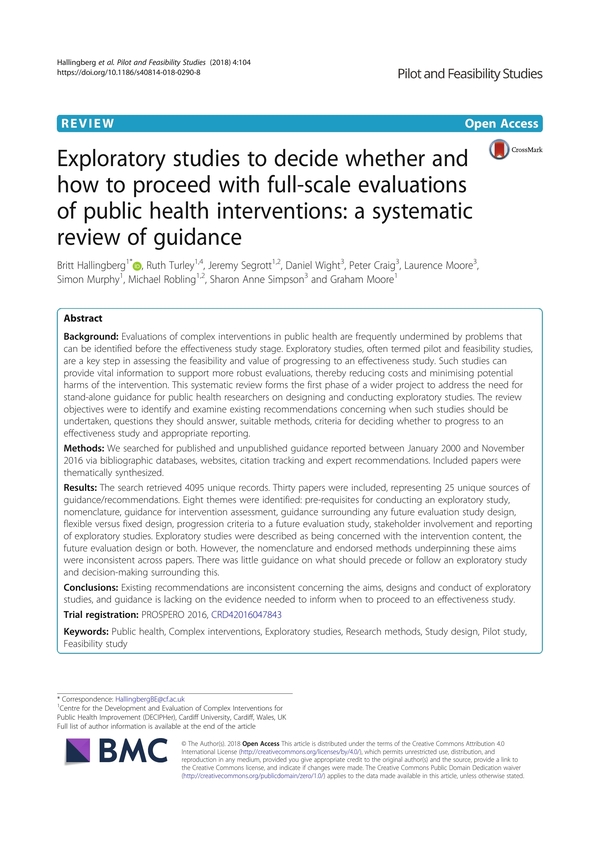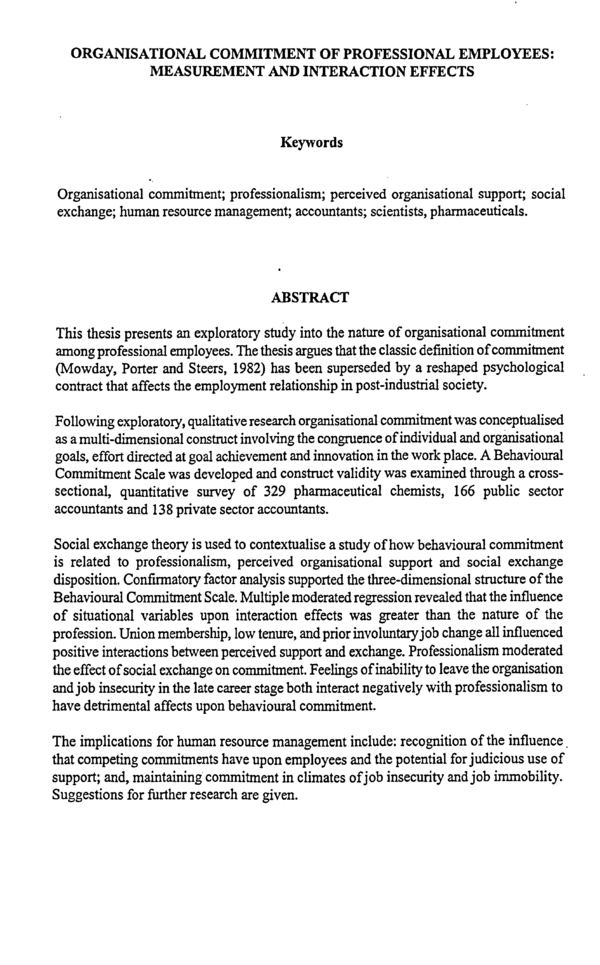Table Of Content

To be reliable, exploratory research should be carried out in a transparent and honest manner, and should adhere to a set of guidelines. In essence, if exploratory research design is carried out in this manner, the study will achieve high validity while also providing new and innovative ways to analyse reality. Research is a continuous process that requires improvement over time, and the purpose of all research is to provide answers to questions through the application of scientific procedures (Lelissa, 2018). The research problem having been formulated in clear-cut terms, the researcher will be required to prepare a research design that is, the researcher will have to state the conceptual structure within which research would be conducted.
Introduction to Research Design in Legal Studies - Legal Service India
Introduction to Research Design in Legal Studies.
Posted: Sat, 19 Aug 2023 17:44:32 GMT [source]
Types of Exploratory Research
What is crucial is that you are flexible, pragmatic and open-minded when carrying out this kind of research. Secondary research is gathering information from previously published primary research. In such a research you gather information from sources likes case studies, magazines, newspapers, books, etc. We cite peer reviewed academic articles wherever possible and reference our sources at the end of our articles. There is no one clear set of methods that must be used in exploratory design. A researcher should select the methodologies that would be most effective in meeting your research questions.
New Case Studies

Exploratory research is the researcher’s tool to understand an issue more thoroughly, before attempting to quantify mass responses into statistically inferable data. Consider a scenario where a juice bar owner feels that increasing the variety of juices will enable an increase in customers. The owner intends to conduct exploratory research to find out; hence, he decides to do exploratory research to find out if expanding their juices selection will enable him to get more customers or if there is a better idea. In that case, you can use exploratory research to determine user experience when customers use them. So now you know what exploratory research is, what is used for, and how to conduct it.

Descriptive Design
In other words, exploratory research design simply explores the research questions, leaving room for further researches, whereas conclusive research design is aimed to provide final findings for the research. This type of research design draws a conclusion by comparing subjects against a control group, in cases where the researcher has no control over the experiment. Unobtrusive measures involve any method for studying behavior where individuals do not know they are being observed. An observational study allows a useful insight into a phenomenon and avoids the ethical and practical difficulties of setting up a large and cumbersome research project.
Systematic Review
Exploratory research is research conducted to investigate a problem that is not clearly defined, has been under-investigated, or is otherwise poorly understood. Often described as grounded theory research, or interpretive research, the approach is not designed to derive conclusive results, but rather to glean insights that can form the foundation of future, more specific research. Using the revelations provided through exploratory research, you can develop research hypotheses and questions for future investigation, and narrow down the data that you need.
Management science research is the systematic development and acquisition of knowledge tailored to specific management needs in order to solve managerial problems in a timely and effective manner. The selection of the appropriate research method is one of the most important fundamentals for success in this field for solving managerial problems (Lelissa, 2018). The use of this design in management sciences may play an important role in the development of this field because it assists a researcher in developing an understanding of the research problem. In this regard, exploratory research design adds value and contributes to the advancement of business research topics (Bashin, 2020). At the opposite end of this spectrum, investigators conducting comparative studies aim to use a primarily deductive approach designed to compare and document how well-defined qualitative phenomena are represented in different settings or populations. An example of a comparative study is a multisite ethnography that seeks to compare how patient-provider communication varies by location, and uses random sampling of patient-provider interactions to collect data.
Adaptation of organic vegetable farmers to climate change: An exploratory study in the Paris region - ScienceDirect.com
Adaptation of organic vegetable farmers to climate change: An exploratory study in the Paris region.
Posted: Fri, 09 Jun 2023 08:25:37 GMT [source]
If you’re writing a research proposal, methodology, or essay in which you need to discuss exploratory research design, I recommend providing a scholarly definition of the topic. This type of research is conducted in the initial stages of a study when there is a lack of clarity about the problem. It may lead to subsequent studies that attempt to generate greater clarity on the findings generated in the initial, exploratory, phase, or to test hypotheses that the exploratory phase generated. Exploratory studies usually create scope for future research and the future research may have a conclusive design.
This method involves identifying and analyzing patterns or themes in qualitative data such as interviews or focus groups. The researcher identifies recurring themes or patterns in the data and then categorizes them into different themes. This can be helpful in identifying common patterns or themes in the data and developing hypotheses or research questions. For example, a thematic analysis of interviews with healthcare professionals about patient care may identify themes related to communication, patient satisfaction, and quality of care. Expert surveys, which are also called key informational conversations, they are aimed at obtaining information from persons who are knowledgeable with the subject of the study. Such information should be owned by senior management of the company, sales managers, managers of individual goods, and also involve independent experts.The focus group is used to put forward hypotheses and obtain information useful for further research phases.
Book contents
The independent variable is administered to the experimental group and not to the control group, and both groups are measured on the same dependent variable. Subsequent experimental designs have used more groups and more measurements over longer periods. Focus groups involve a group discussion that is conducted to gather opinions, attitudes, and perceptions from a small group of individuals about a particular topic.
Perhaps, surveys adequately produce the data you need at the conceptual phase, and running a focus group could be better before the alpha release. See how users are taking action on survey data to improve customer experience with the SurveyMonkey app for HubSpot. Generally, there is no prior research done or the existing research that has been carried out does not answer the problem precisely enough. Therefore, exploratory research is usually the first step in a longer research journey.
For this reason, for exploratory research to be of the best use, you will need to adopt an open mind, and be willing to change your research approach and directions accordingly. However, commonly, exploratory studies are shaped as small-scale qualitative designs. Qualitative research allows researchers to delve deep into a topic to generate high-quality, contextualized, and nuanced descriptive data. Qualitative data generally cannot create generalizable results, but it does help to create hypotheses that can be looked at with larger-scale quantitative studies.
Furthermore, without using exploratory research to guide the survey design and question building process, your entire research goal may be heading in the wrong direction. Let’s say we are creating a restaurant feedback survey with the end goal of identifying and improving upon our restaurant’s weak points. We may decide to make respondents rate their level of happiness with our restaurant’s customer service, menu selection, and food quality.
Causality studies may be thought of as understanding a phenomenon in terms of conditional statements in the form, “If X, then Y.” This type of research is used to measure what impact a specific change will have on existing norms and assumptions. Most social scientists seek causal explanations that reflect tests of hypotheses. Causal effect (nomothetic perspective) occurs when variation in one phenomenon, an independent variable, leads to or results, on average, in variation in another phenomenon, the dependent variable. The function of a research design is to ensure that the evidence obtained enables you to effectively address the research problem logically and as unambiguously as possible.
In fact, many big tech companies thriving today pivoted based on early disparaging data accordingly. These include Burbn going from just another check-in app to what Instagram is today. Secondary research involves the analysis of data that is already in existence, either through being naturally generated (such as historical sold prices of a certain item on eBay), or having been collected by another individual or institution for a different purpose. Furthermore, commercial sources provide information on major topics like political agendas, demographics, financial information, market trends and information, etc.

No comments:
Post a Comment